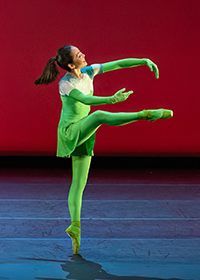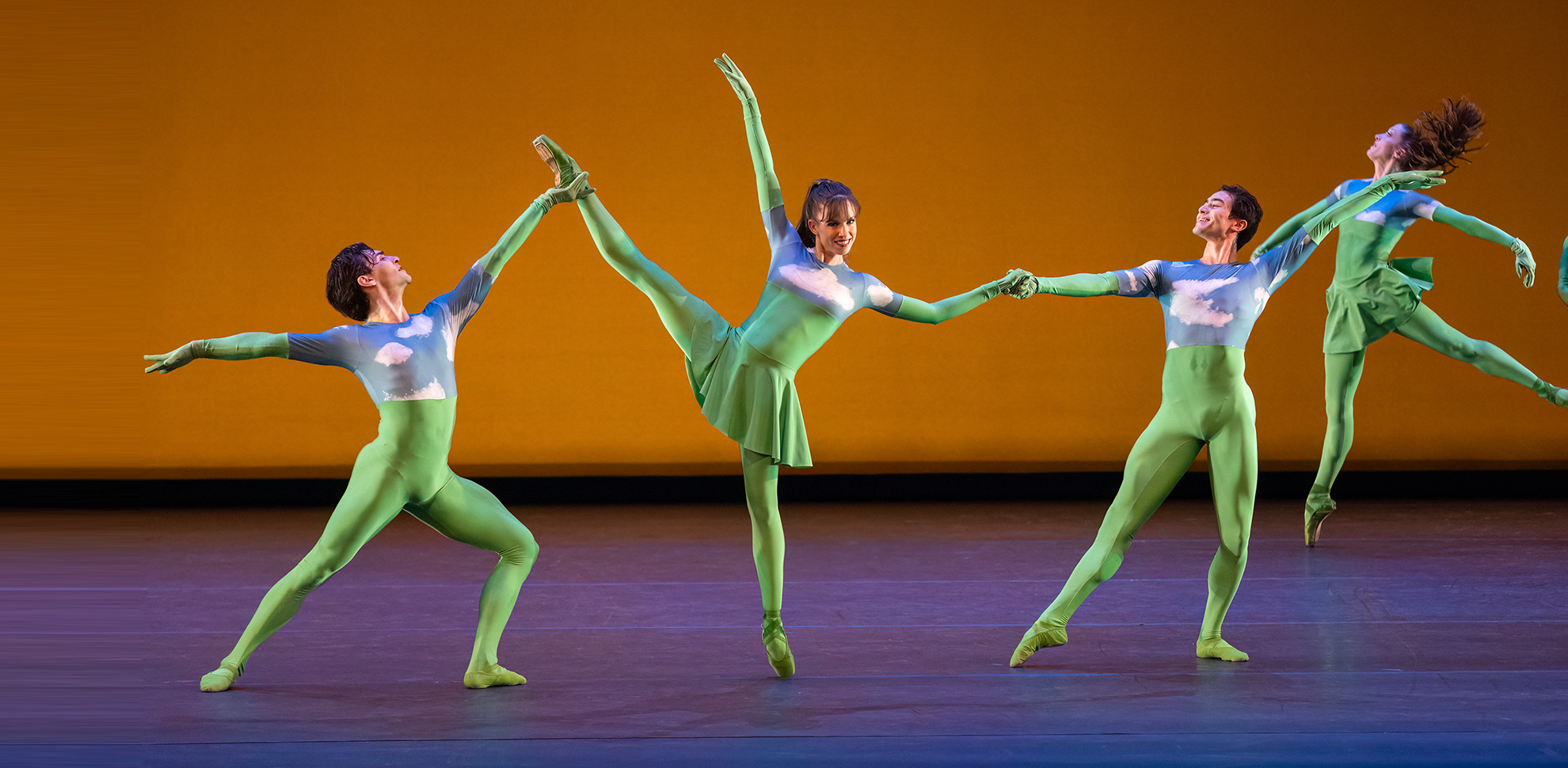
Choreography: Mark Morris
Music: Leroy Anderson
Sleigh Ride; The Typewriter; A Trumpeter’s Lullaby; Saraband; Balladette; Jazz Pizzicato; Jazz Legato; Fiddle Faddle; The Girl in Satin; Song of the Bells; The Syncopated Clock
Staged by Tina Fehlandt
Costume Design: Isaac Mizrahi
Lighting Design: James F. Ingalls
Mark Morris loathes program notes. Or so we’ve read in his autobiography Out Loud. So if you’d rather pop out to the bar for a drink or chat with a friend before the performance instead of reading this, you have his blessing. All you know right now is enough to enjoy Sandpaper Ballet in the way Morris intended it. Still here? Great. Because Sandpaper Ballet, Mark Morris, and Morris’ creative process are fascinating, even beyond what you’ll see onstage. Morris is known as an intensely “musical” choreographer, who is both inspired by and deeply knowledgeable about a wide, eclectic range of music. Sandpaper Ballet was a 1999 commission for San Francisco Ballet. Impressed by the playing of SFB’s orchestra, Morris chose a big orchestral score—11 pieces by 20th-century American “pops” composer Leroy Anderson, starting with “Sleigh Ride” and ending with “The Syncopated Clock.”
“Mark had always loved the music of Leroy Anderson,” says Tina Fehlandt, a founding member of Mark Morris Dance Group who stages Morris’ works. “He loved this piece called ‘The Sandpaper Ballet.’ It didn’t work as music for the ballet, but he named the piece Sandpaper Ballet because he wanted people to wonder about the song, then go listen to it.” NB: A tribute to vaudeville soft-shoe dancing, it features the sound of sandpaper sanding—and is well worth a listen. Sandpaper Ballet incorporates 16 women and nine men, who start in and continually return to a five-by-five person grid. For all the light-heartedness in the music, the ballet is rigorous in its composition. “Mark is very mathematically and structurally inclined,” explains Fehlandt. “He has this incredible way of manipulating and maneuvering large groups to make formations that are architecturally satisfying.”
For “The Syncopated Clock,” dancers are divided neatly into two moving cubes: an inner square of nine men and an outer cube of 16 women. For Sandpaper Ballet to work onstage, the dancers have to move with precision and, importantly, as a cohesive group. Fehlandt says that was exactly what Morris intended when he created it. “From my point of view, Mark was in the mood to do something big and celebratory and joyful—to say to these dancers, ‘let’s all dance together.’”
–Caitlin Sims, courtesy of San Francisco Ballet
Ballet premiere: April 19, 1999, San Francisco Ballet, War Memorial Opera House; San Francisco, CA
Kansas City Ballet premiere: May 12, 2023, Kauffman Center for the Performing Arts, Kansas City, Missouri
